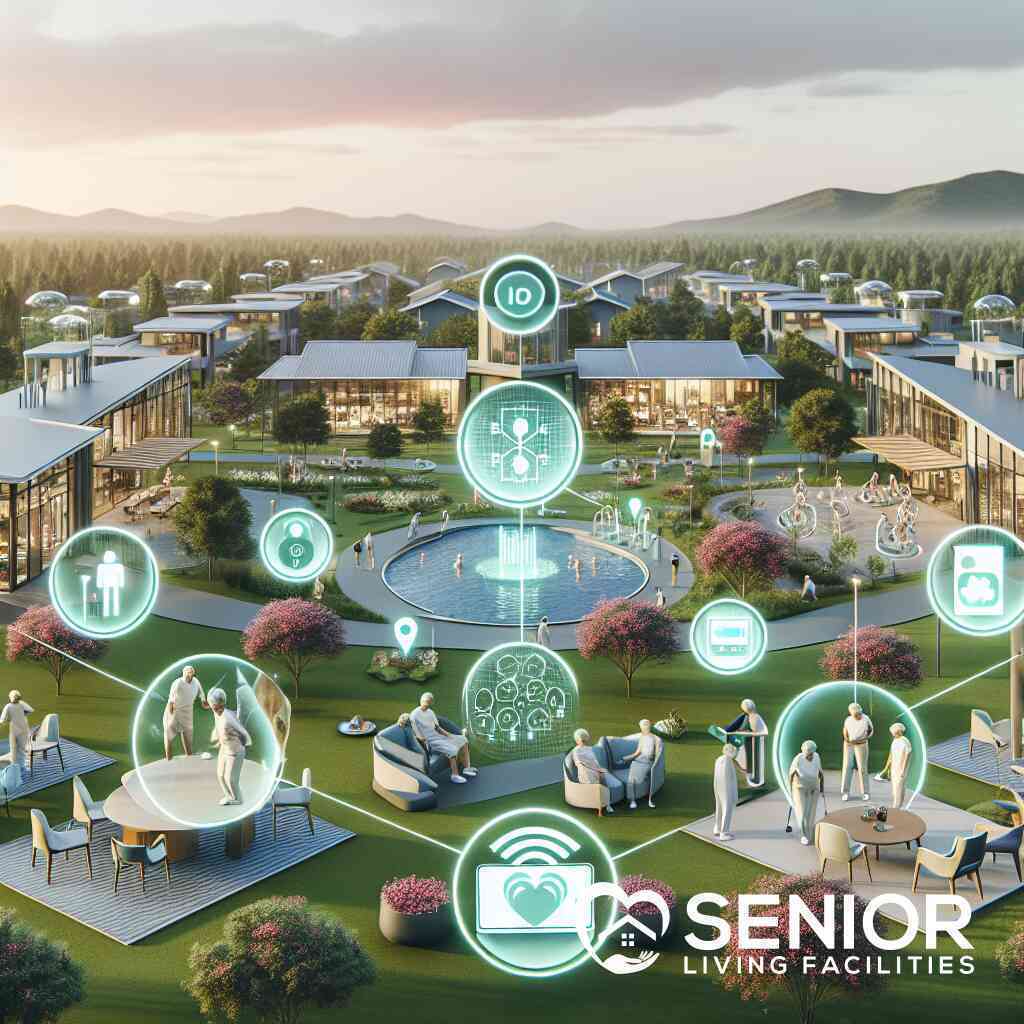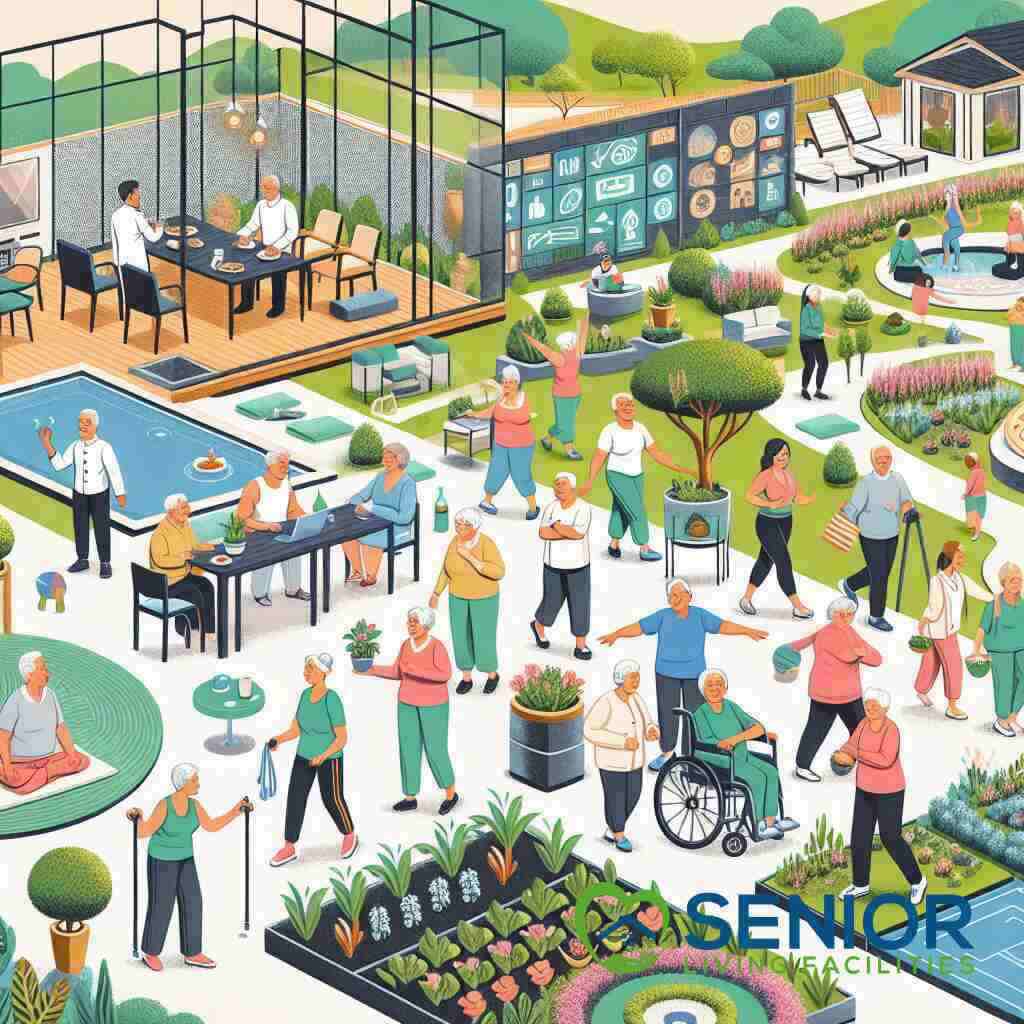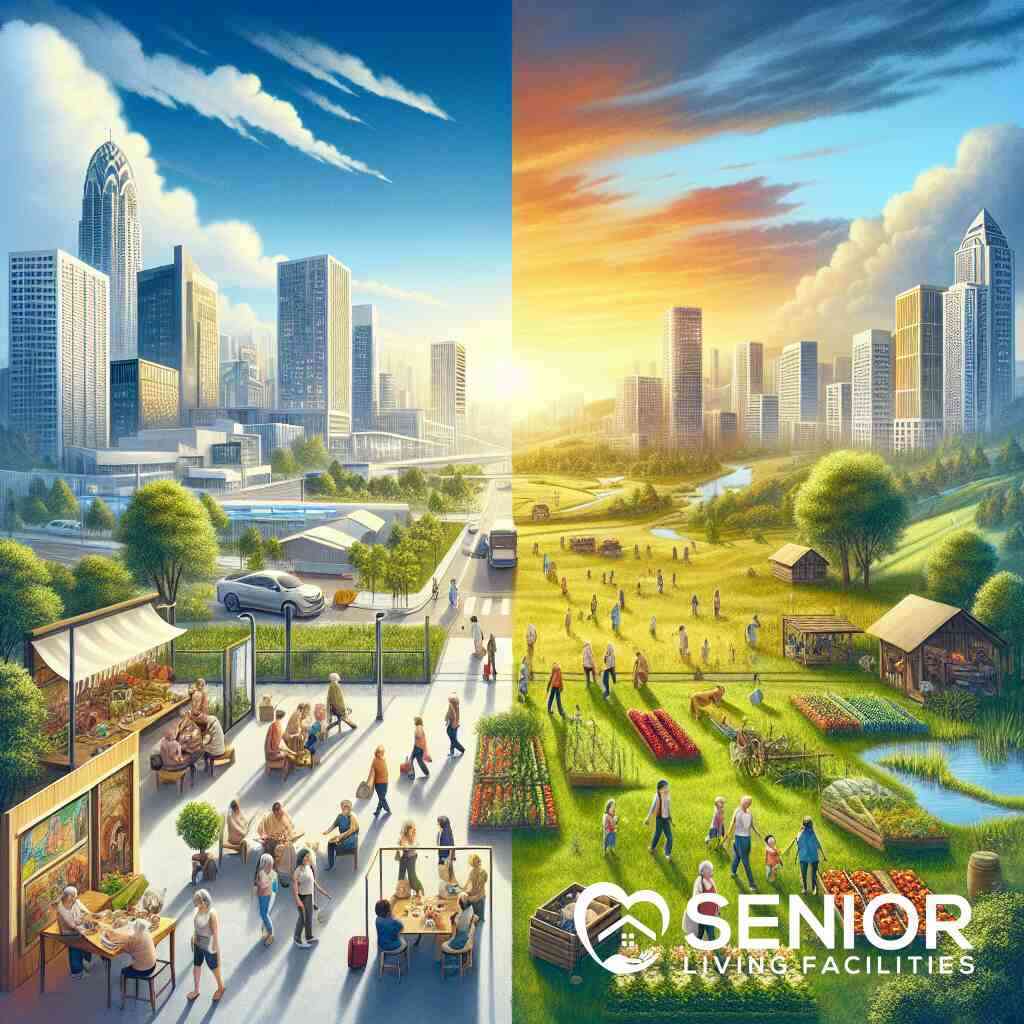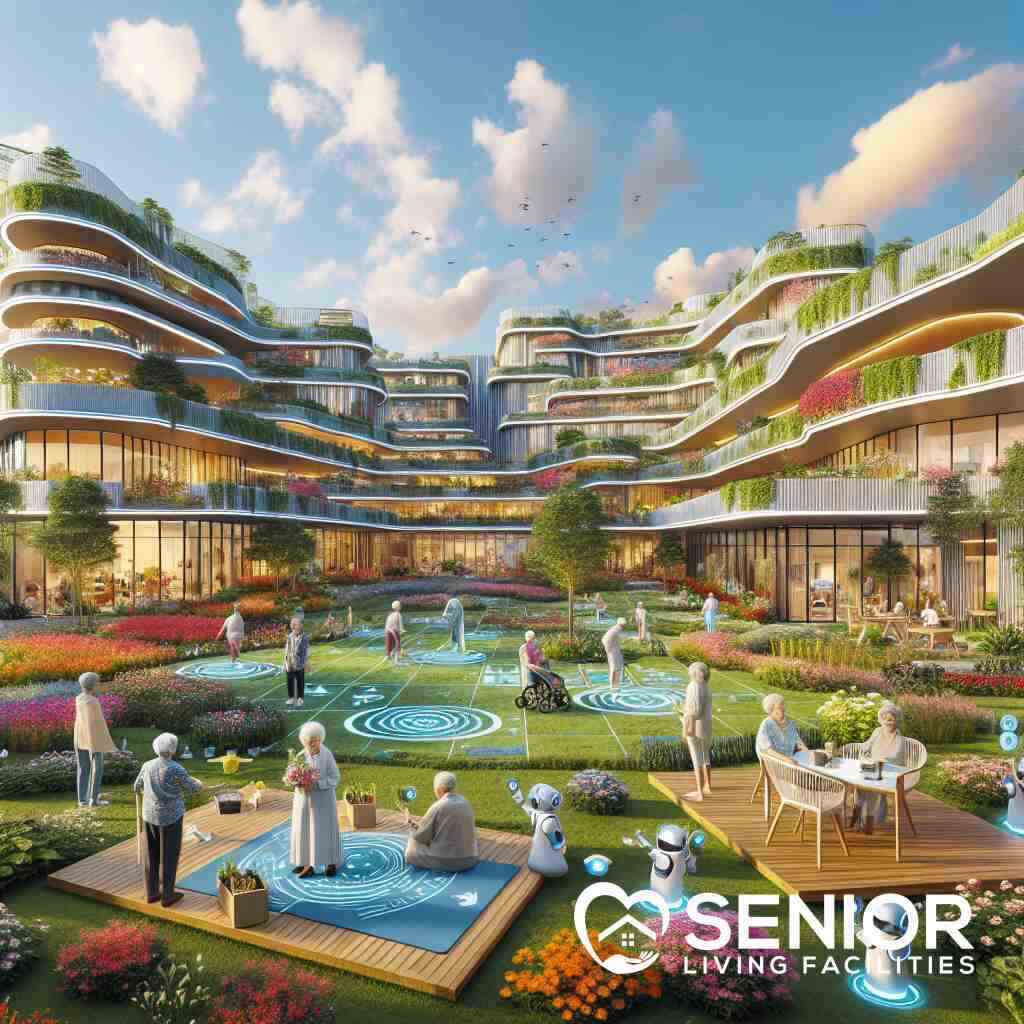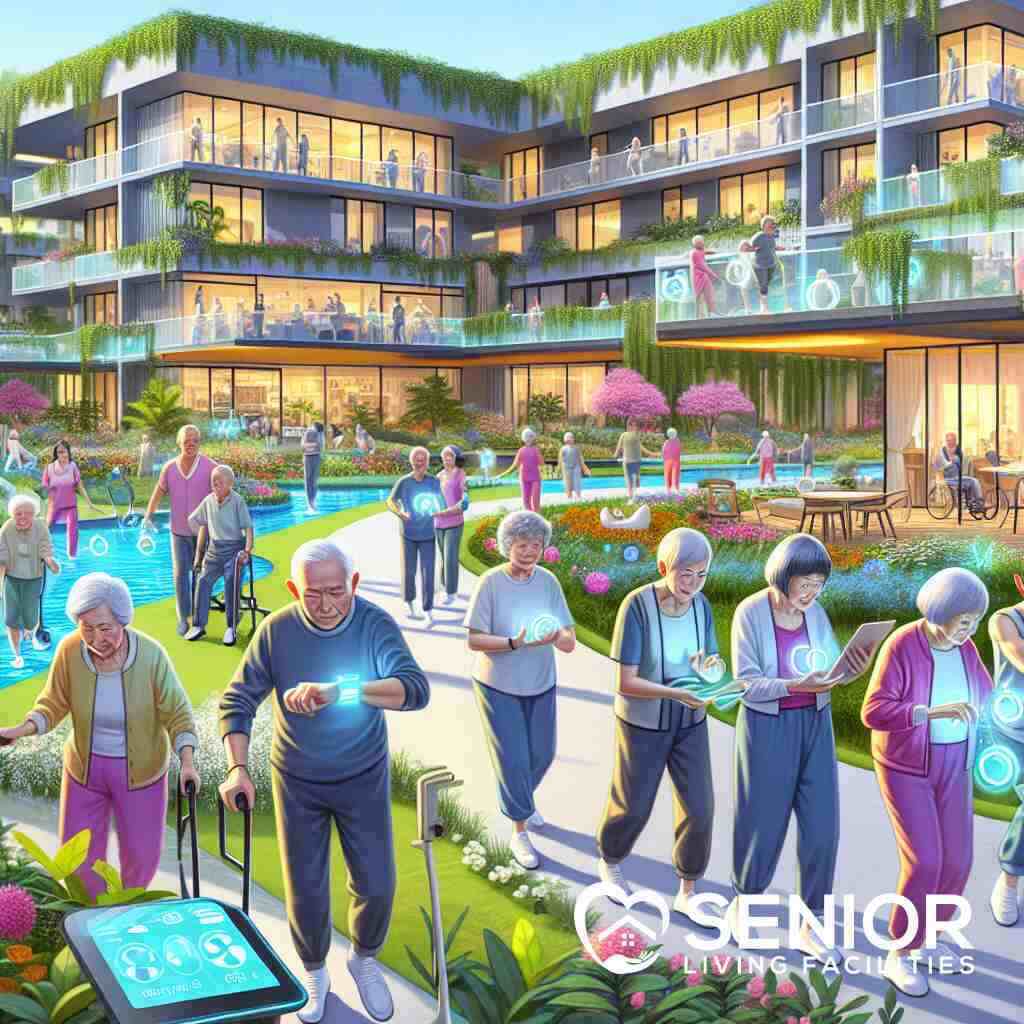
Ultimate Guide to Tech-Savvy Senior Living in 2024
September 28, 2024
Introduction to Tech-Savvy Senior Living in 2024
Evolution of Senior Living Facilities
The landscape of senior living has undergone remarkable transformations over the past few decades. Initially, senior living facilities were primarily focused on providing basic care and accommodations. However, as the baby boomer generation has aged, there has been a significant push towards not only enhancing the quality of life but also incorporating advanced technology into everyday living. Modern senior living facilities now resemble vibrant communities equipped with the latest technologies to ensure comfort, safety, and wellness. With the integration of smart devices and AI, these facilities are now better suited to cater to the individual needs of their residents, making them more than just a place to live but a place to thrive.
The Importance of Technology in Enhancing Senior Care
Technology in senior care plays a crucial role in enhancing the quality of life for residents. It’s not just about medical care but also about creating environments where seniors can maintain independence while receiving the support they need. Technologies such as IoT devices, wearable health monitors, and smart home systems have revolutionized the way care is delivered in senior living communities. These tech tools help in monitoring health, providing timely medical attention, and even managing daily tasks through automated systems. This not only boosts the efficiency of care but also empowers seniors to feel more in control of their lives.
Overview of Emerging Tech Trends in Senior Living
As we move into 2024, several tech trends are set to shape the future of senior living. Internet of Things (IoT) devices are becoming more prevalent, enabling smarter and more interconnected living environments. These devices can control everything from room temperature to alerting staff about potential health issues. Artificial Intelligence (AI) is also making inroads into personalized care, with systems designed to learn from individual habits and preferences to provide customized support. Additionally, the use of Virtual Reality (VR) and augmented reality (AR) in wellness programs offers exciting new ways to engage in physical and cognitive exercises. These emerging technologies foster a highly functional and supportive environment tailor-made for seniors in 2024, epitomizing the growth of tech-savvy senior living solutions.
Smart Home Solutions in Senior Living
Integration of IoT for Comfort and Safety
The integration of the Internet of Things (IoT) into senior living facilities has brought remarkable improvements in both comfort and safety for residents. By deploying sensors and connected devices throughout living spaces, communities are now equipped to monitor environmental conditions continuously, ensuring that aspects such as temperature, lighting, and even air quality are automatically adjusted to optimal levels. Moreover, IoT technology facilitates advanced safety measures; for instance, motion sensors can alert staff if a resident falls or if unusual activity is detected in their room. This proactive approach not only enhances the living conditions but significantly boosts the overall well-being of seniors, making IoT in assisted living a cornerstone of modern care strategies.
How Smart Devices are Revolutionizing Daily Living
Smart devices are transforming daily living for seniors by introducing unparalleled convenience and efficiency. These devices, controlled via voice or smartphone apps, allow residents to manage everything from window shades and lighting to TV and thermostat settings without physical strain. For seniors with limited mobility, such tech advancements are life-changing, enabling them to enjoy a greater degree of independence. Furthermore, smart kitchen appliances can help safely prepare meals, and robotic vacuums keep living spaces clean, reducing the risks associated with mundane tasks. Each of these innovations plays a significant role in maintaining the dignity and independence of seniors by minimizing reliance on staff for basic needs and daily routines.
Case Studies: Smart Senior Living Facilities in California and Florida
Examining specific instances of how technology is applied across different states provides valuable insights into the practical benefits of tech-enhanced senior living. In California, several smart senior living facilities are pioneering the use of sophisticated systems that integrate AI and machine learning to adapt to the preferences and habits of their residents, resulting in highly personalized living experiences. On the other hand, Florida has seen the rise of high-tech senior apartments that focus on integrating health-monitoring technologies directly into the living environment. These systems monitor vital signs and alert medical staff in real-time during emergencies, providing peace of mind for both residents and their families. These case studies not only reflect the adaptability of smart technology in senior living but also underscore its potential to significantly enhance the quality of life for seniors across various regions.
Health and Wellness Technologies
Wearable Tech for Seniors: Monitoring and Emergency Response
Wearable technology has quickly become a cornerstone in the world of senior health, offering not just convenience but crucial safety features. Devices like smartwatches and fitness trackers are now capable of monitoring heart rates and sleep patterns and even detecting falls. These wearable technologies for seniors have advanced to the point where they can automatically alert medical staff or family members when a potential health issue arises, ensuring immediate response in emergencies. The integration of this technology into senior living facilitates not only constant health monitoring but also a rapid response system, which can be lifesaving.
Modern wearable devices are designed with simplicity in mind, making them incredibly user-friendly for seniors. Large displays, voice activation, and emergency buttons are some of the key features that enhance usability for the elderly. This tech empowerment boosts seniors’ confidence, knowing they are just a tap away from assistance.
Telehealth Services and Its Impact on Senior Health Care
Telehealth has revolutionized access to healthcare, particularly in the senior living sector. Seniors can now consult with physicians and specialists via video calls without the need to travel, which is especially beneficial for those with mobility limitations or those residing in remote areas. This digital transformation in healthcare delivery not only enhances convenience but also ensures that seniors receive timely medical attention.
The benefits of telehealth extend beyond mere consultations. It includes ongoing wellness checks, mental health support, and even remote physical therapy sessions, all from the comfort of one’s room. For senior living communities, telehealth represents a significant step towards a comprehensive healthcare model, one that bridges the gap between seniors and healthcare providers while significantly reducing the risk associated with hospital visits and transportation.
Innovations in Smart Medication Management
Managing medication schedules can be challenging for many seniors, particularly those with complex prescriptions. Innovations in smart medication management systems have been pivotal in ensuring adherence to prescribed medical regimens. These systems remind residents when it’s time to take their medication and can automatically dispense the correct doses, effectively minimizing human error.
Beyond just dispensing medication, these smart systems are capable of keeping detailed logs of medication times and dosages, which can be shared with healthcare providers better to monitor a resident’s compliance and health progress. This level of detail and control is not only reassuring to the residents and their families but also to the medical professionals who are tasked with their care. Smart medication management is a prime example of how technology is making senior living safer and more efficient, significantly impacting the quality of life and health outcomes for seniors.
Assistive Technologies for Increased Independence
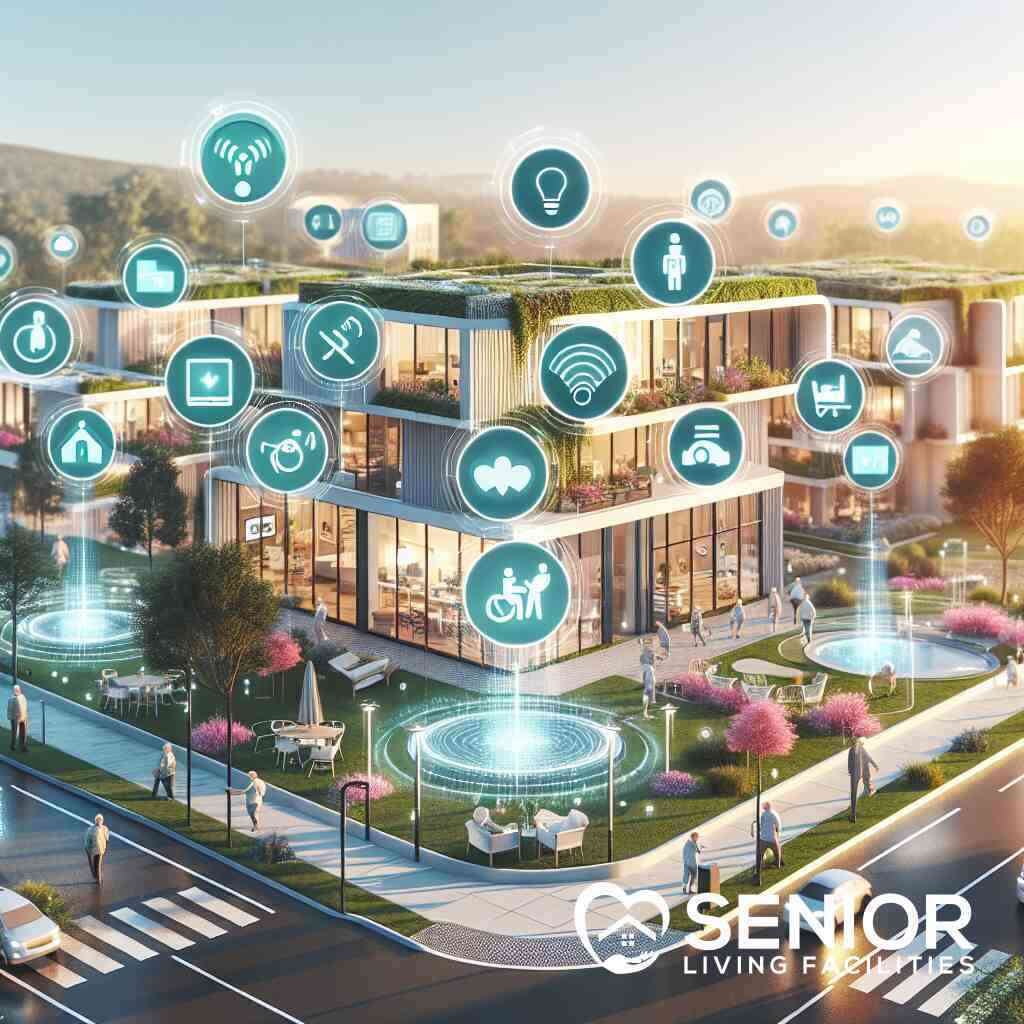
Exploring Assistive Devices for Mobility and Daily Tasks
The evolution of assistive technology has dramatically reshaped the potential for increased independence among seniors. Devices specifically designed to aid mobility and simplify daily tasks are on the rise, transforming everyday activities into manageable undertakings for our elderly population. Mobility aids such as electric scooters, walkers, and adaptive furniture not only enhance mobility but also promote safety within the living environment. Similarly, everyday tools like ergonomic utensils, easy-grip handles, and voice-activated home systems are making daily tasks less daunting.
Independence in performing daily chores is vital for maintaining a senior’s self-esteem and psychological health. The emotional and physical benefits these devices provide play a crucial role in extending their ability to live independently. Additionally, innovative solutions like automatic pill dispensers and interactive home appliances are empowering seniors to manage their health and household tasks with more confidence and less reliance on caregivers.
Virtual Reality for Mobility Training and Cognitive Health
Virtual reality (VR) technology is beginning its impactful journey into the realm of senior wellness by providing immersive experiences that promote both physical and cognitive health (virtual reality in senior wellness). VR programs designed for mobility training facilitate realistic simulations that enhance muscle coordination, balance, and strength, all from the safety of one’s room. These simulations range from simple balance activities to complex interaction environments that mimic real-world challenges, providing both physical and mental engagement.
Cognitive health, another crucial aspect of senior care, has notably benefited from VR. Therapeutic VR interventions are used to combat cognitive decline by offering memory games, spatial recognition exercises, and even historical experiences that evoke personal memories and emotions, thus stimulating cognitive processes. The adaptability of VR allows for the creation of personalized experiences that cater to the specific therapeutic needs of individuals, making it a versatile tool in senior healthcare strategies.
The Role of AI in Personalized Senior Care
The integration of Artificial Intelligence (AI) into senior care is revolutionizing the approach to personalized healthcare services. AI systems are capable of analyzing vast amounts of data from health monitors and daily activity sensors to predict and respond to the health needs of the elderly with unprecedented precision (AI advancements in senior care). For instance, AI-driven platforms can detect deviations in daily routines that may indicate health issues, prompting preemptive actions even before the senior or the caregiver is aware of a potential problem.
Beyond routine monitoring, AI is instrumental in evolving personalized care plans that are continuously adapted as the senior’s conditions and preferences change. These dynamic plans can include dietary recommendations, exercise programs, and social interactions specifically tailored to enhance the individual’s overall well-being. AI not only supports the physical health of seniors but also addresses their mental and emotional needs, proving to be an integral part of holistic senior care solutions in tech-savvy environments.
Educational and Social Integration
Tech Education Programs for Seniors
In 2024, embracing technology is not just a convenience but a necessity, especially for seniors looking to thrive in tech-savvy living environments. Tech education programs aimed at seniors provide the foundational knowledge and skills required to navigate this new digital landscape effectively. These programs range from basic computer skills classes to more advanced courses on using smart home devices and understanding cybersecurity.
The objective is to reduce the digital divide and empower seniors to use technology to enhance their quality of life. For example, training sessions might cover how to use tablets to manage personal health data, participate in virtual meetings with loved ones, or even manage finances online securely. By demystifying technology, these programs play a critical role in integrating seniors into the digital world, thereby enhancing their autonomy and connectivity.
Online Wellness Programs and Virtual Community Engagement
The evolution of online wellness programs has transformed them into a pivotal component of daily life in senior living communities. These programs provide a range of activities, from guided meditation sessions and fitness classes to nutrition workshops, all available through digital platforms. The accessibility of these resources enables seniors to maintain physical health and mental well-being from the comfort of their homes.
Virtual community engagement initiatives have also surged, creating digital spaces where seniors can interact, share experiences, and continue to learn together. Activities like virtual book clubs, online game nights, and live-streamed cultural events foster a sense of community and ongoing social interaction. These virtual spaces not only help reduce feelings of isolation among seniors but also encourage them to remain active participants in society.
Senior-Friendly Apps that Boost Cognitive Function and Social Interaction
In the realm of tech-savvy senior living, applications specifically designed for seniors play an essential role. These apps are tailored to enhance cognitive function and facilitate easier social interactions. For instance, memory games, puzzle apps, and language learning tools are popular for cognitive health, helping seniors keep their minds sharp and engaged.
Social interaction apps provide platforms for video calls, messaging, and social media, all designed with user-friendly interfaces to accommodate the particular needs of seniors. This ensures that staying connected with family, friends, and peers is just a few taps away, thereby supporting their social well-being. The integration of these senior-friendly apps into daily routines dramatically adds to the richness of life in tech-enhanced senior living communities, combining technology with personal care to foster an environment where seniors not only live but thrive.
Security and Support in Tech-Enhanced Living
Ensuring Cybersecurity in Senior Tech Solutions
In today’s digital age, cybersecurity is a paramount concern, especially in senior living communities where residents might be less familiar with the pitfalls of modern technology. Tech-savvy senior living facilities invest heavily in comprehensive cybersecurity measures to protect the sensitive personal and health data of their residents. Implementing advanced encryption methods, secure Wi-Fi networks, and regular security audits are pivotal in safeguarding against cyber threats.
Senior living facilities enhance their defenses by incorporating training programs that educate residents on potential scams and phishing attacks, further fortifying their digital perimeters. This proactive approach not only secures digital platforms but also ensures a safe living environment free from the worries of digital exploitation. Senior cybersecurity measures are not just a technical necessity but a commitment to resident safety and trust.
The Importance of Continuous Tech Support
Ongoing tech support is integral to the operation of a tech-enhanced senior living community, ensuring that both residents and staff can effectively utilize the technology provided. This support spans troubleshooting, regular maintenance of hardware and software, and updating systems to guard against vulnerabilities. The presence of an on-site dedicated tech support team allows for immediate assistance, which is crucial in maintaining the continuity of care and lifestyle tech solutions.
Support extends beyond fixing issues, encompassing educational aspects to help residents understand and embrace technology. By breaking down barriers to technology adoption through patient, clear instruction, tech support personnel play a critical role in enriching the lives of seniors, making technology an empowering tool rather than a challenge.
Remote Monitoring: Balancing Safety with Privacy
Remote monitoring technologies in senior living communities provide a dual benefit of safety and independence, tracking health metrics and activity to offer peace of mind to both residents and their families. However, this technology introduces concerns related to privacy, making it essential to balance these aspects carefully. Transparent policies and clear communication about what is monitored, why, and who has access to the data are vital in maintaining trust.
Systems designed with robust privacy controls allow residents to feel secure without feeling surveilled. These technologies enhance safety by detecting emergencies and deviations in routines, thereby facilitating timely interventions while respecting the dignity and privacy of seniors. This delicate balance underscores the importance of ethical technology use in modern senior living, ensuring that innovations cater equally to safety and privacy needs.
Conclusion and Future Outlook
The Future Projections of Tech in Senior Living
As we look towards the horizon of 2024 and beyond, technology continues to evolve at an unprecedented rate, promising to transform senior living in numerous profound ways further. The trajectory of tech integration into senior care is moving from mere adoption to deep, transformational applications that enhance both the quality and efficacy of care. Prospective developments could include advanced AI that not only monitors health but also anticipates needs and manages chronic conditions. We’re also on the cusp of seeing wider use of blockchain for secure, seamless sharing of healthcare data among providers and even more sophisticated IoT devices that create even smarter living environments. These advancements will undoubtedly make senior living facilities even more capable of offering unparalleled care and quality of life.
How Senior Living Facilities Can Adapt to Technological Advances
For senior living facilities to remain at the forefront of care, continuous adaptation to technological advancements is crucial. Facilities can ensure they stay relevant by investing in continuous staff training and embracing a culture that is open to change and innovation. It’s essential to have strategic partnerships with tech companies to tailor cutting-edge solutions that address specific needs within the senior care context. Also, adopting flexible infrastructure designs that can readily accommodate new technologies will be key. Finally, integrating technology should never overlook the human touch; therefore, facilities must maintain a balance between tech and compassionate care, ensuring that technology serves as a tool to enhance human connections rather than replace them.
Closing Remarks on the Benefits of Tech-Savvy Senior Living
In the tech-enhanced landscape of 2024, senior living is not about simplifying old age; it’s about revitalizing it. The thoughtful integration of technology in senior living not only alleviates the physical challenges associated with aging but also enriches the lives of seniors, ensuring they live with dignity, independence, and happiness. Facilities that embrace and implement these technologies are seeing remarkable improvements in healthcare outcomes, a heightened sense of community, and increased overall satisfaction among their residents. As we continue to innovate, the potential for what life can look like in our later years is being redefined. Truly, the blending of technology with compassionate care is crafting a future where the golden years can shine even brighter.
In conclusion, as technology continues to evolve, so too does the landscape of senior living. By embracing these changes, senior living facilities ensure that they not only meet the current needs of their residents but are also prepared for future demands. These advancements are creating environments where seniors are not only cared for but are thriving, proving that the best is yet to come in the era of tech-savvy senior living.
Frequently Asked Questions
Question: What types of technology are featured in the “Ultimate Guide to Tech-Savvy Senior Living in 2024” for enhancing senior care?
Answer: The “Ultimate Guide to Tech-Savvy Senior Living in 2024” highlights a range of technologies that redefine the landscape of senior care. Key features include IoT-integrated environments for comfort and safety, wearable tech for health monitoring and emergency response, smart medication management systems, and AI-driven personalized care plans. These technologies provide a seamless combination of efficiency and personalized attention, making senior living facilities safer, more intuitive, and better adapted to the individual needs of residents. At Senior Living Facilities, we champion these tech solutions to ensure every senior’s needs are met with the utmost precision and care.
Question: How do Senior Living Facilities incorporate IoT technology to benefit the residents?
Answer: Senior Living Facilities incorporate IoT technology through smart home solutions that enhance both safety and comfort for residents. This includes environmental monitoring like adjusting temperature and lighting, health monitoring through wearable devices, and security measures such as motion sensors to detect falls. Senior Living Facilities ensure that these interconnected systems work seamlessly to provide a living space that not only simplifies management and healthcare but also enriches the living experience for our seniors across all states.
Question: Can you elaborate on the types of virtual reality programs used in senior wellness, as mentioned in the guide?
Answer: Senior Living Facilities leverage virtual reality (VR) to offer a multitude of therapeutic and rehabilitative programs that foster both physical and cognitive health. These include VR mobility training sessions that help enhance balance and strength, cognitive exercises aimed at reducing cognitive decline, and virtual tours that stimulate engagement and social interaction. By providing engaging, versatile, and personalized VR experiences, we aim to maintain and enhance the mental and physical agility of seniors, ensuring their well-being and happiness.
Question: What educational resources do Senior Living Facilities provide to help seniors become more tech-savvy?
Answer: At Senior Living Facilities, we understand the importance of bridging the digital divide for seniors, which is why we offer comprehensive tech education programs. These range from basic tutorials on how to use smartphones and applications to more in-depth sessions on managing health data and using smart home devices. Our aim is to empower seniors to navigate the digital world confidently, enhancing their independence and ensuring they fully benefit from the technological advancements in their living environments.
Question: What measures are taken to ensure cybersecurity in the tech-enhanced living environments provided by Senior Living Facilities?
Answer: Cybersecurity is paramount at Senior Living Facilities, where we implement state-of-the-art measures to protect our residents’ personal and health information. Our cybersecurity protocol includes regular updates, secure Wi-Fi connections, and encrypted data storage systems. Additionally, we conduct ongoing cybersecurity awareness programs for both residents and staff, ensuring that everyone is aware of potential digital threats and how to avoid them, thus maintaining a secure and trustworthy environment for all.
